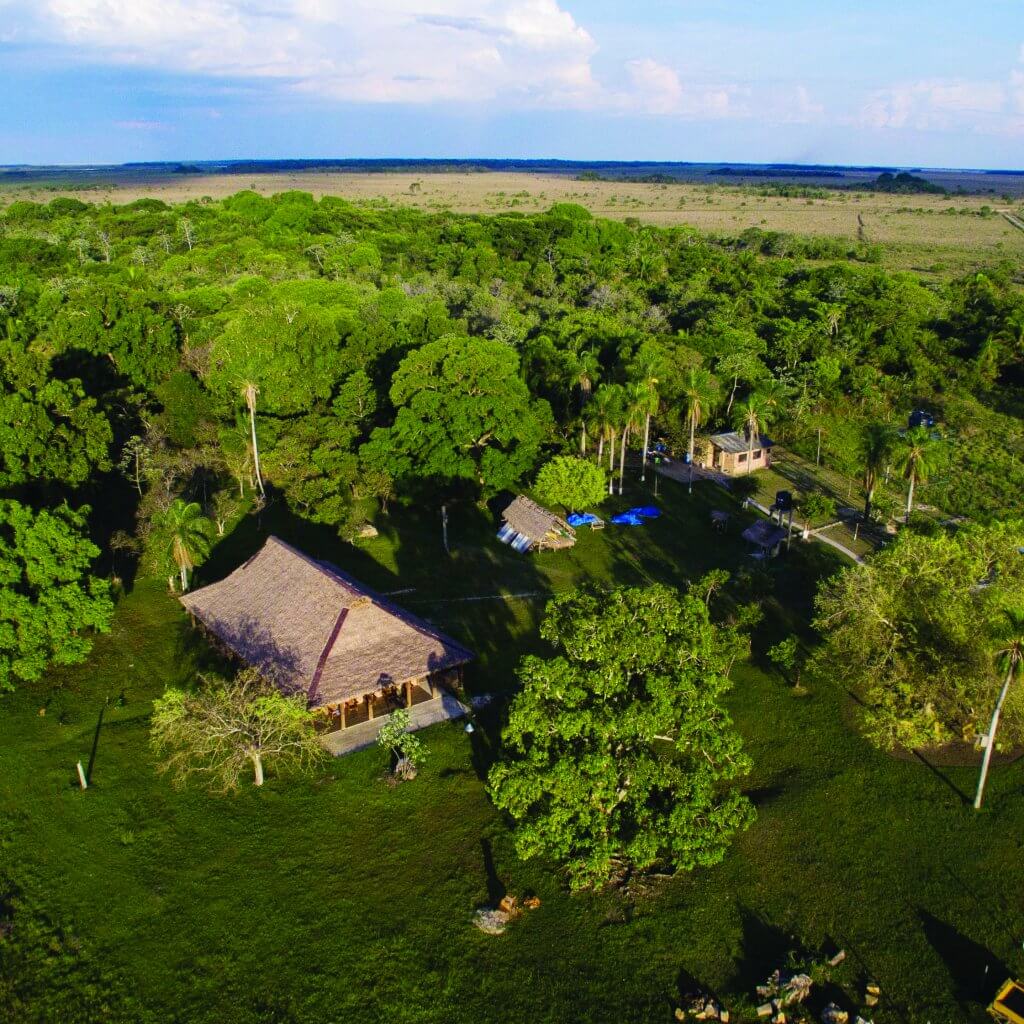ABC Birding: Barba Azul Nature Reserve, Bolivia
Lay of the Land
Barba Azul Nature Reserve is located in northern Bolivia, in the northern part of a rich and remote region called the Beni Savanna. Habitats within the reserve include seasonally flooded grasslands, gallery forest, palm islands, marshes, and riverside wetlands. “Barba azul” is Spanish for “blue beard,” which is the local name for the Blue-throated Macaw, the bird that inspired the reserve's creation. After the breeding season, Barba Azul hosts the largest of three subpopulations (228 individuals in 2022) of this Critically Endangered species. The protected area, created in 2008, now spans more than 27,000 acres, after several expansions.
Focal Birds
Barba Azul is a haven for more than 340 bird species, including the Endangered Ibera Seedeater and the Vulnerable Cock-tailed and Sharp-tailed Tyrants and Black-masked Finch. Species now scarce in many parts of their range are also found in the reserve, such as the Near Threatened Greater Rhea and Orinoco Goose. Other species frequently seen in the reserve include: Southern Screamer, Brazilian Teal, Hoatzin, Ocellated Crake, Sunbittern, Jabiru, Whistling Heron, Black-collared and Savanna Hawks, Long-winged Harrier, Toco Toucan, Chestnut-eared Araçari, Crimson-crested Woodpecker, Campo Flicker, Cobalt-rumped Parrotlet, Peach-fronted Parakeet, Yellow-collared and Blue-and-yellow Macaws, Large-billed and Rusty-backed Antwrens, Streamer-tailed Tyrant, Purplish Jay, Black-capped Donacobius, Orange-backed Troupial, Wedge-tailed Grass-Finch, White-rumped Tanager, Red-crested and Red-capped Cardinals, and a variety of seedeaters.
Other Wildlife
Barba Azul is also a top destination for mammal watching: The Vulnerable Giant Anteater and Near Threatened Maned Wolf are regularly seen, and the reserve also supports Near Threatened Pampas Deer, Vulnerable Marsh Deer, Collared Peccary, Black Howler Monkey, Capybara (the world's largest rodent), Brazilian Guinea Pig, Crab-eating Fox, and these wild cats: the Near Threatened Jaguar and Pampas Cat, Puma, Ocelot, and Jaguarundi. Also, the poorly known and Near Threatened Bush Dog has been reported here.
Frequently seen reptiles include Black and Yacare Caimans and two large lizards: the Black-and-white Tegu and Giant Ameiva. The Vulnerable Yellow-footed Tortoise also lives here, and this wet wilderness hosts a dizzying array of frog species as well.
Signature plants include palms, such as the locally abundant Motacú (Attalea phalerata), which produces fruits that are an important Blue-throated Macaw food source.
When to Visit
March through October is best for seeing Blue-throated Macaws. Outside these months, the birds leave to breed elsewhere in the Beni Savanna.
Conservation Activities
In 2008, thanks to supporter Patricia Davidson, ABC assisted Bolivian partner Asociación Armonía in establishing the reserve, which was deemed essential because the macaws and their habitat were threatened by widespread overgrazing, annual burning of pastures, and poaching. The two organizations have since worked together to restore the reserve's habitats and conserve its striking biodiversity. In 2014, the reserve was doubled in size thanks to support from ABC and other organizations. ABC also supported development of a sustainable grazing program on parts of Barba Azul to maintain a vibrant and diverse patchwork of grassland habitats that also provides a model for others involved in grazing elsewhere in the region.
Like many macaw and parrot species, the Blue-throated Macaw was threatened by the cage-bird trade. After years of public-education efforts, however, illegal trapping of Blue-throats has dropped dramatically. Asociación Armonía has mastered the design of artificial nest boxes for Blue-throated Macaws in the southern Beni region, where 128 birds have fledged from boxes since 2005. With ABC support, the organization is trying to find design tweaks that will draw macaws to stay and nest at Barba Azul as well.
Much of the area outside the reserve is still grazed and burned annually. Reserve staff are trained in firefighting, and they work hard to patrol and protect the area, maintaining 28 miles of firebreaks around the reserve's perimeter.
Directions
This remote site is best reached by charter flights leaving from the city of Trinidad, the capital of Beni department. Reaching Barba Azul by vehicle is difficult and only possible during the dry season, between June and September. Asociación Armonía arranges visitors' local transport at the time of reservation. While in the country, many traveling birders combine a visit to Barba Azul with trips to other Bolivian birding hotspots, including Asociación Armonía's Red-fronted Macaw Lodge and the Sadiri Lodge in the Amazonian rainforest.
At Barba Azul, boots are available for visitors' use. They are considered essential gear, as is insect repellant.
Where to Stay

The reserve has four cabins, with twin beds and private bathrooms, and a dining hall, built with support from ABC. Two “glamping” areas are also available, with tents accommodating up to 12 visitors. A minimum of a three-night stay is required.
For More Information Click Here
The Exceptionally Rare Blue-throated Macaw
The Blue-throated Macaw is one of the rarest members of the parrot family. In the 1980s, it was believed to number 500-1,000 wild individuals, but the cagebird trade, habitat loss, and other threats took a significant toll. In the 1990s, the population stood at 110-130 birds. Bolivia outlawed trapping of the macaw, and it has made a slow recovery ever since.
The dedicated work of the World Parrot Trust, World Land Trust, Loro Parque Fundación, Asociación Armonía, the Laney Rickman Blue-throated Macaw Fund, and ABC has helped the species bounce back. A report in 2020 estimated the global population numbers 312-455 wild individuals, which equates to 208-303 mature macaws. Around 1,000 Blue-throats also exist in captivity around the world, including in several zoos. Captive birds can live for more than 50 years. In 2015, Bolivia declared the Blue-throated Macaw a National Heritage species.



















































